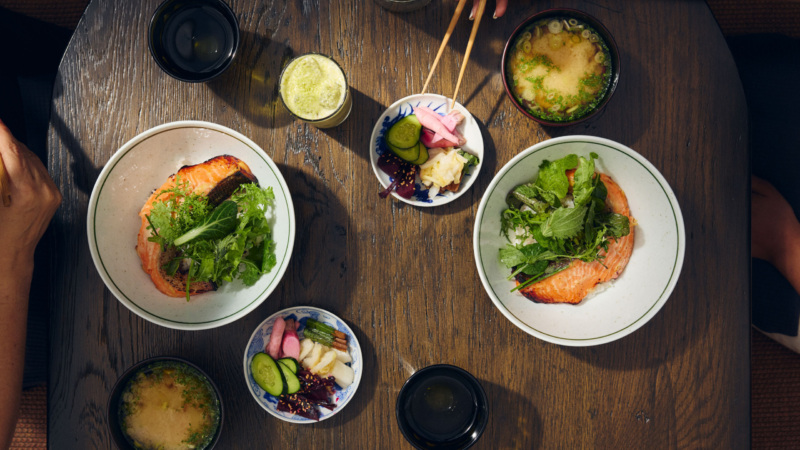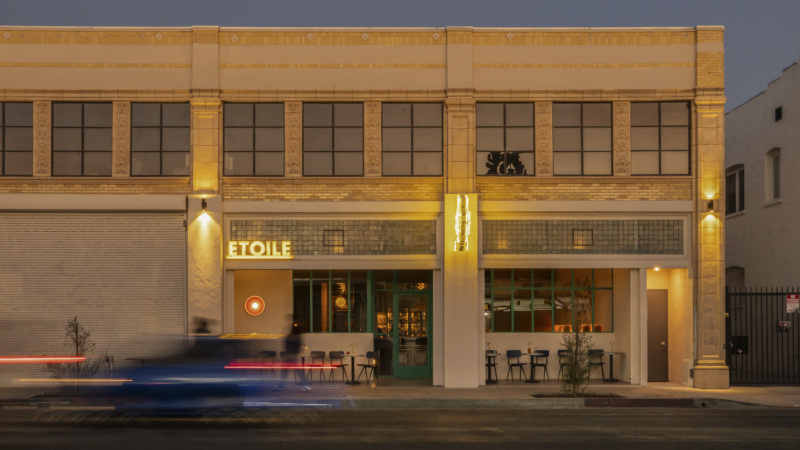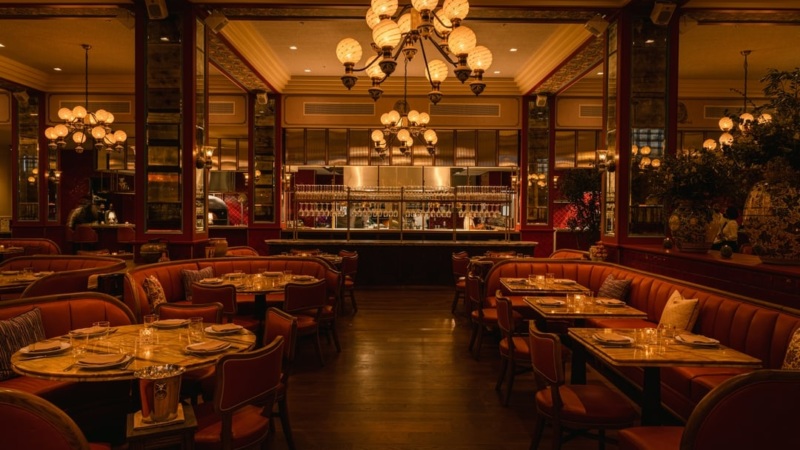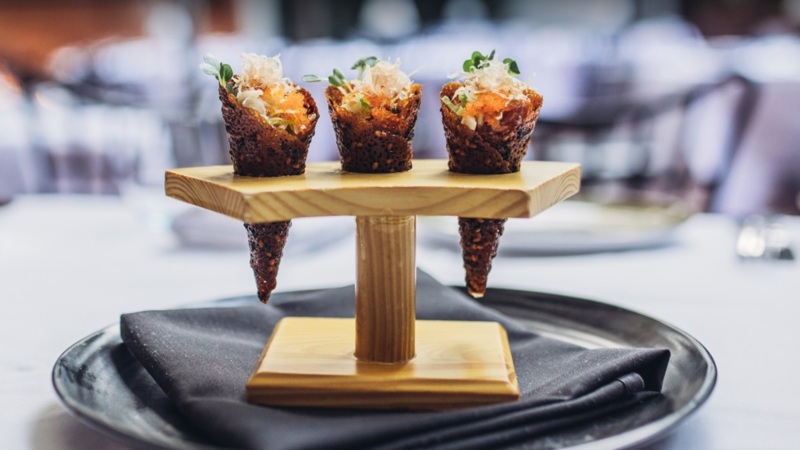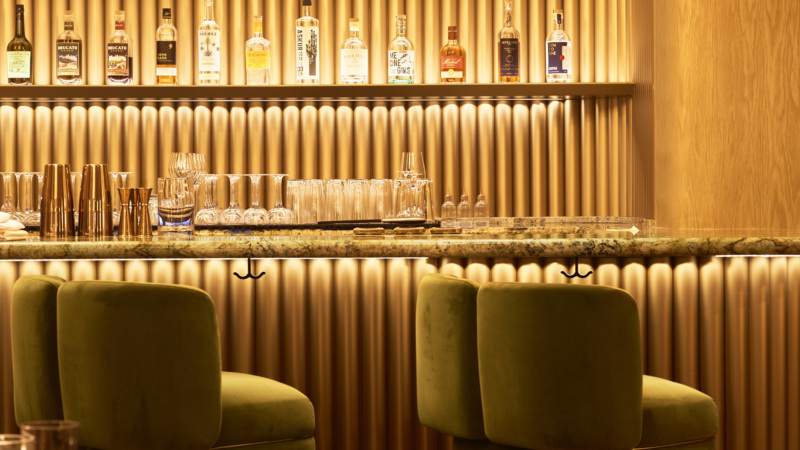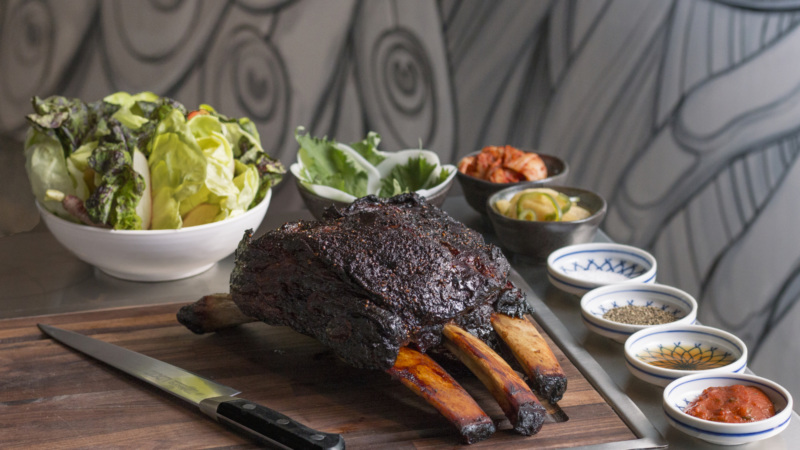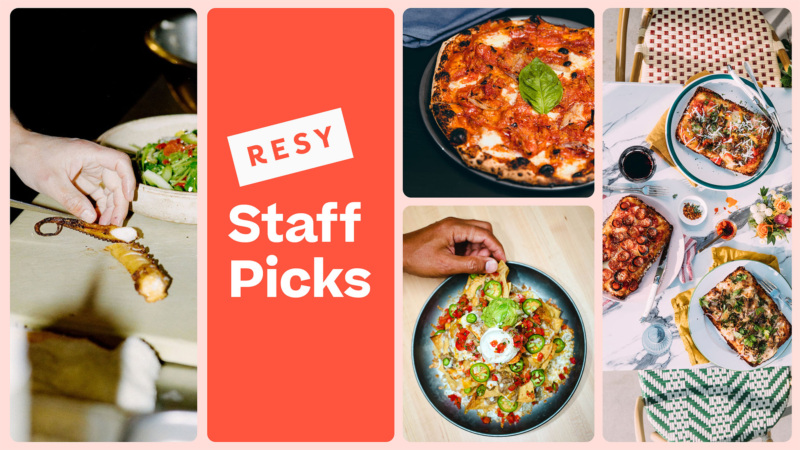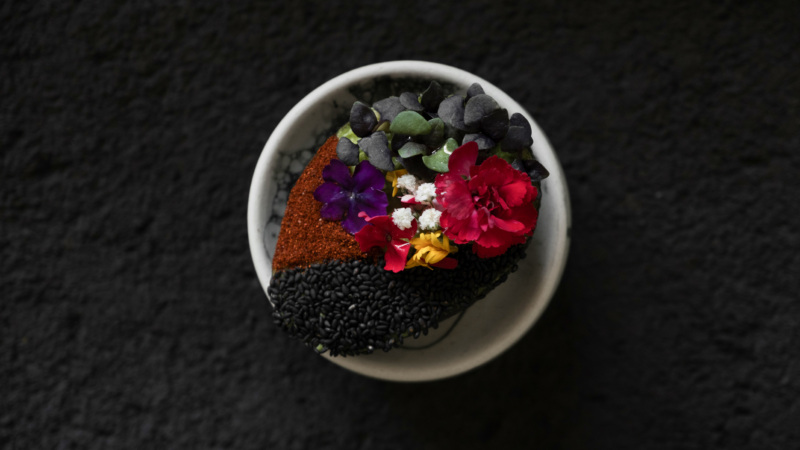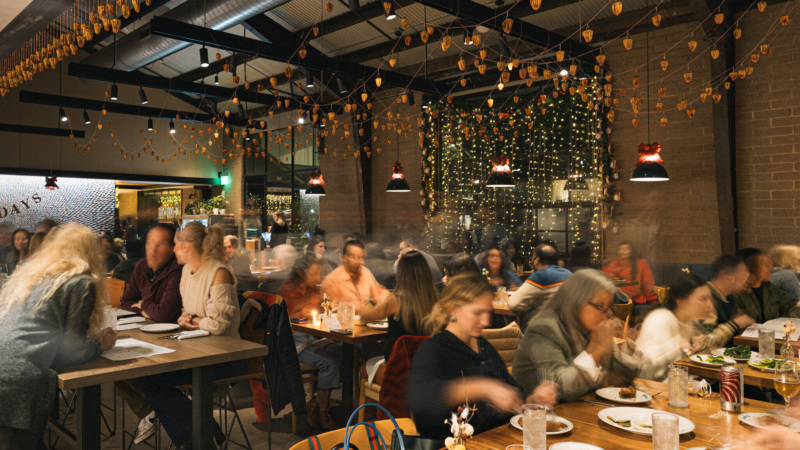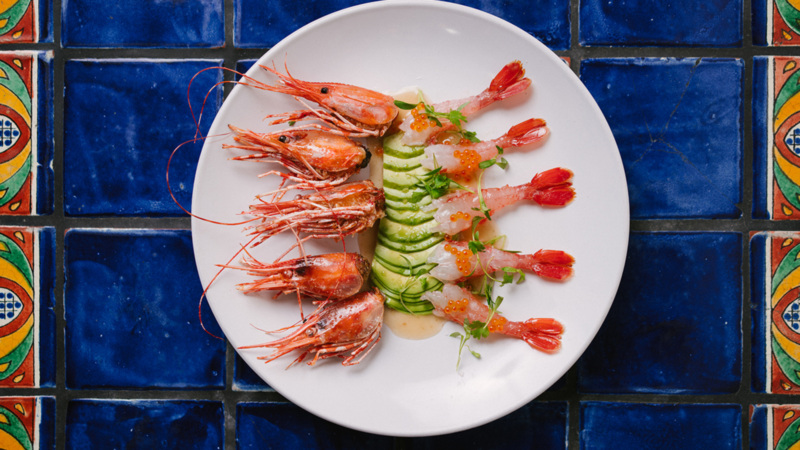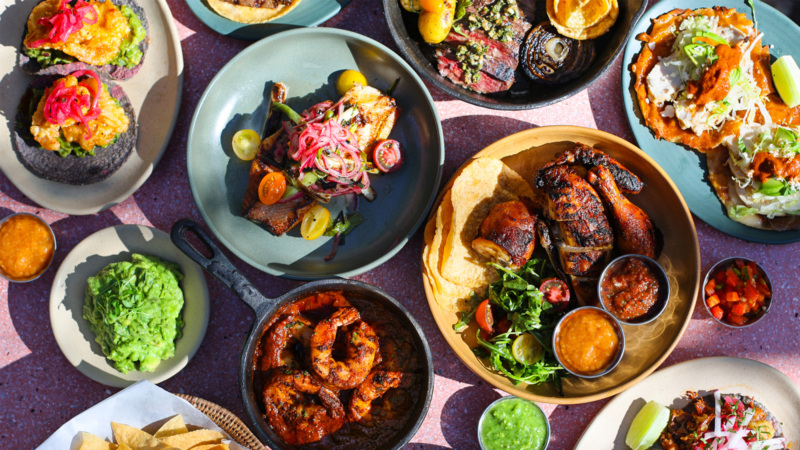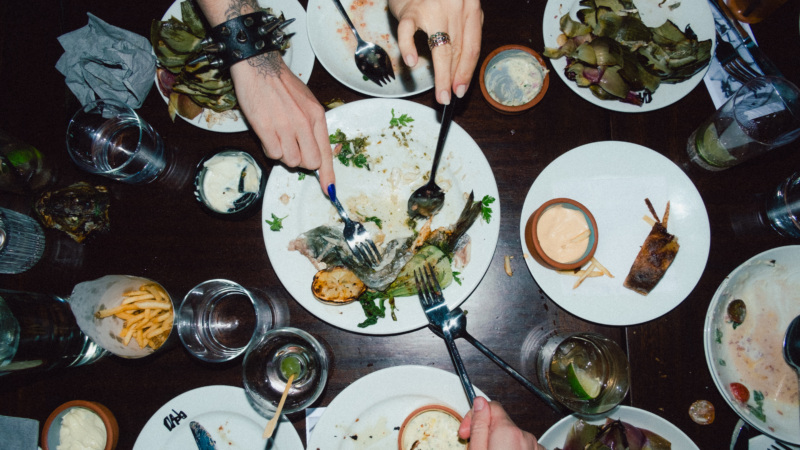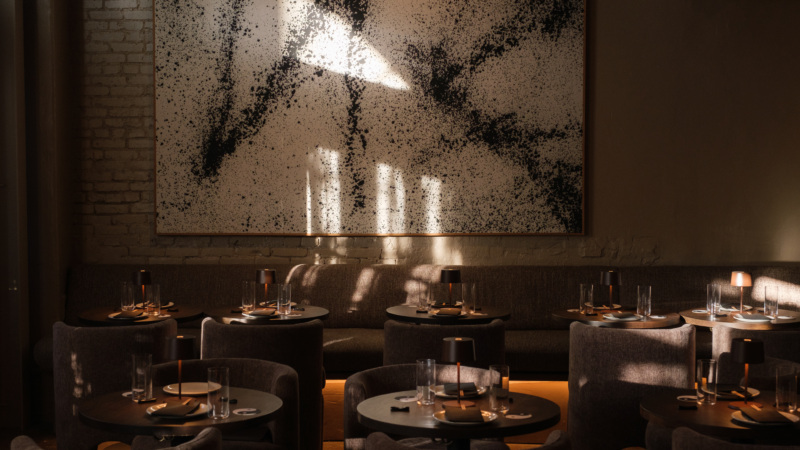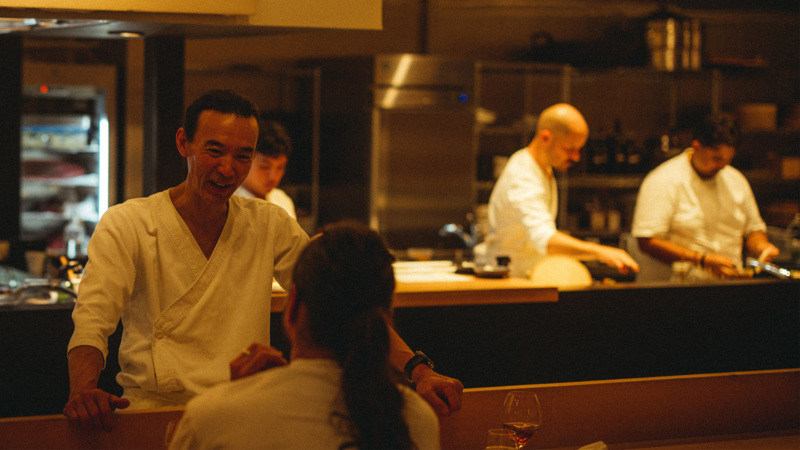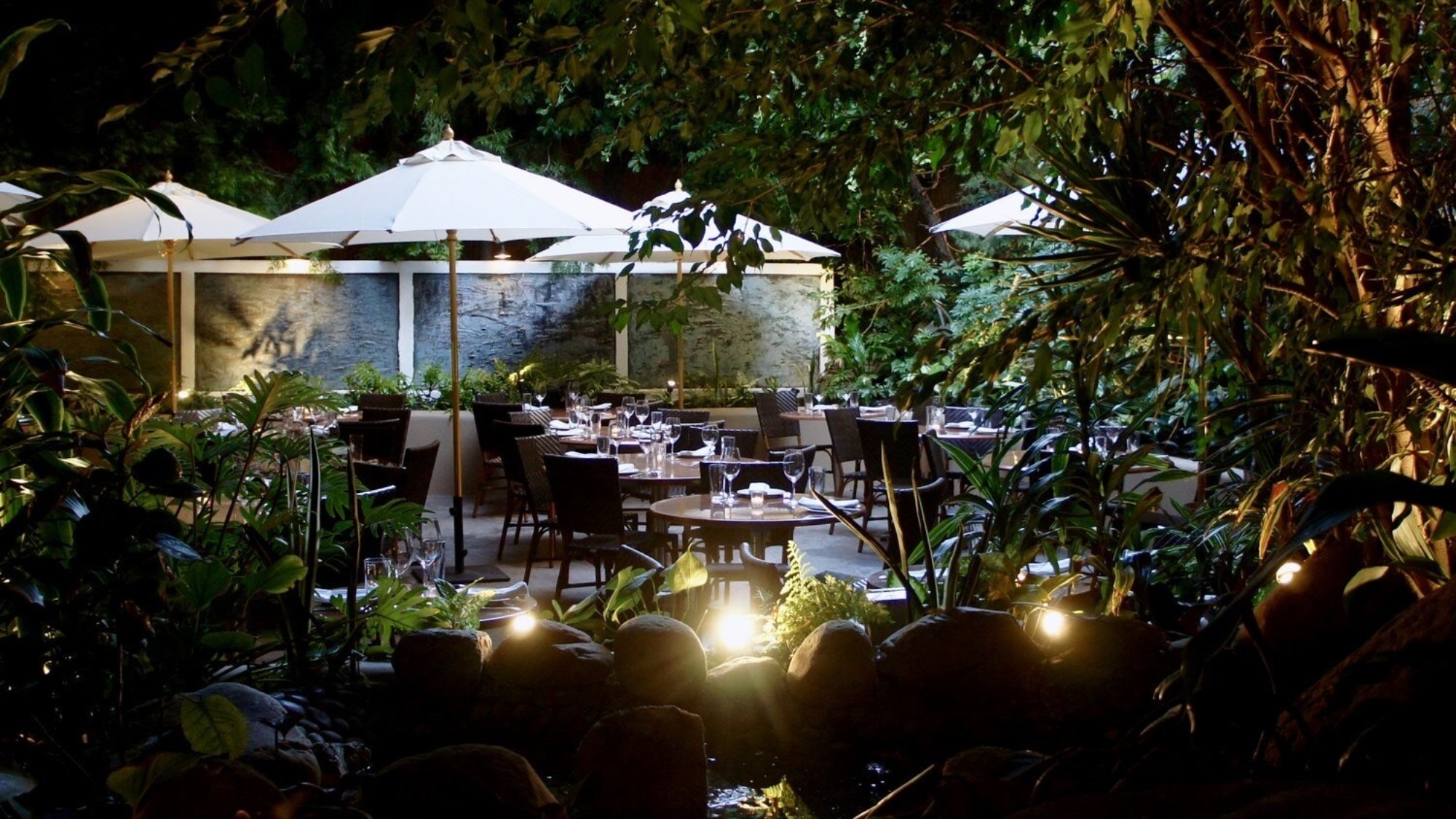
How Michael’s Brought the Food and Art Worlds Together, One Painting at a Time
If life is largely about finding your tribe, then Kim and Michael McCarty have been especially lucky, ever since the food and art worlds converged when the couple opened Michael’s in 1979. Over 40 years later, the walls of their Santa Monica stalwart tell the story of overlapping burgeoning movements that still resonate today.
The streamlined Moderne-style 3rd Street building is a rare surviving artists’ canteen, where Paris-trained chef Michael McCarty championed young culinary talent — there’s the famed photograph of a confident young McCarty posing alongside chefs Mark Peel, Jonathan Waxman, and Ken Frank — and helped establish what is now known as California cuisine.
Kim, a painter who earned her BFA at ArtCenter College of Design in Pasadena and was studying at UCLA’s MFA program during Michael’s early days, savvily used the space to support their friends, many of whom made the leap from emerging status to art world stars.
“As soon as we opened, a lot of artists started eating here, like Richard Diebenkorn, David Hockney, and Dennis Hopper,” Kim says, sitting in a modular chair in Michael’s front lounge. A series of black-and-white images taken by Hopper, featuring celebrity friends like Toni Basil and Terri Garr, line the wall above her. “These photographs are seminal — they’re so much of a time and place,” she says.
At Michael’s, in other words, everything is personal.
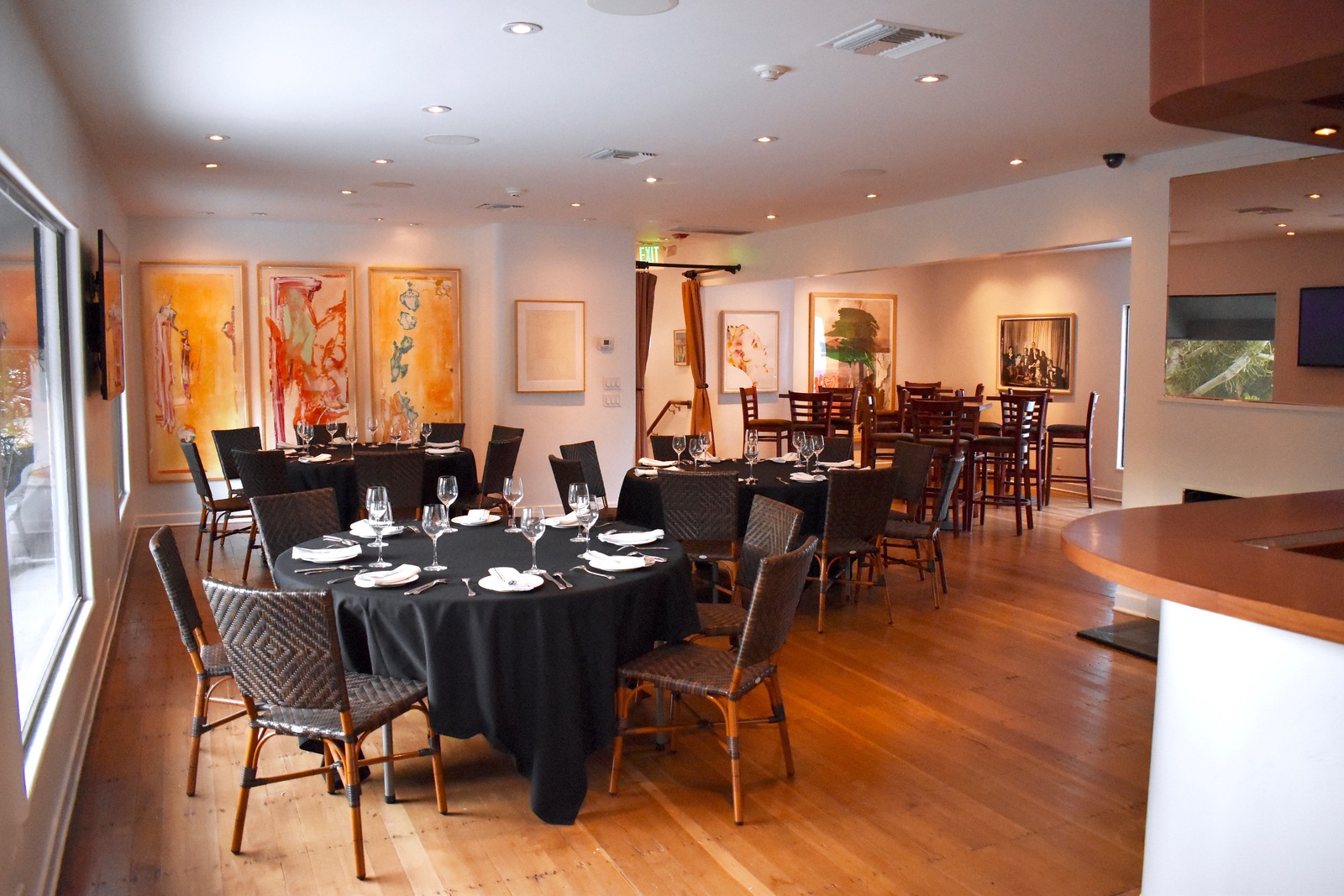
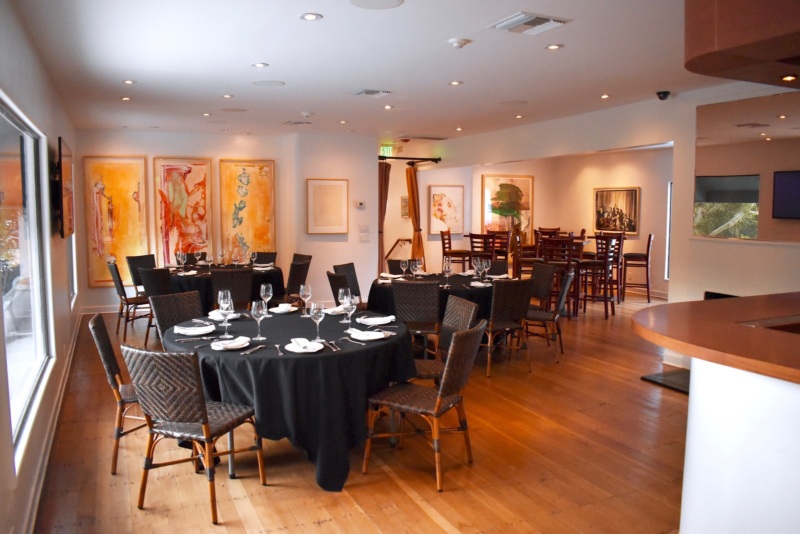
“We would say this: If you like to eat, you like to drink, and you like art — you’re with us,” Michael says. This philosophy guided the McCartys and set the scene in both Santa Monica and its sister location in Midtown Manhattan, which quickly became a power lunch destination for the media set after opening in 1989.
Serendipity of the zeitgeist played a role in conjunction with a strategy. Before the restaurant made its debut, Michael approached all the major art dealers in town — a much smaller group then, and a full year before Larry Gagosian established his business — with a proposition.
Inspired by his time in Paris in the ‘70s, McCarty said, ‘We don’t have any money, but I want to do trade.’” His rule? “I only want local artists or artists that we meet. Starving artists,” he says, half-jokingly. (The only exception is a Marcel Duchamp piece that hangs in New York, which the McCartys acquired via early Santa Monica customers and legendary designers Ray and Charles Eames.)
Peter Goulds of LA Louver in Venice was first to bite, brokering introductions to the likes of Hockney, Diebenkorn, Charles Garabedian, and William Brice. More big names soon followed: Tony Berlant, Sam Francis, Billy Al Bengston and other Cool School-associated cohorts, and Kim McCarty herself, who rejected the belief that “real” artists must be tethered to New York City. This newer generation appreciated McCarty’s knack for serving French-influenced fare without the Old World fuss, instead injecting the experience with casual flair and an effortlessly chic style.
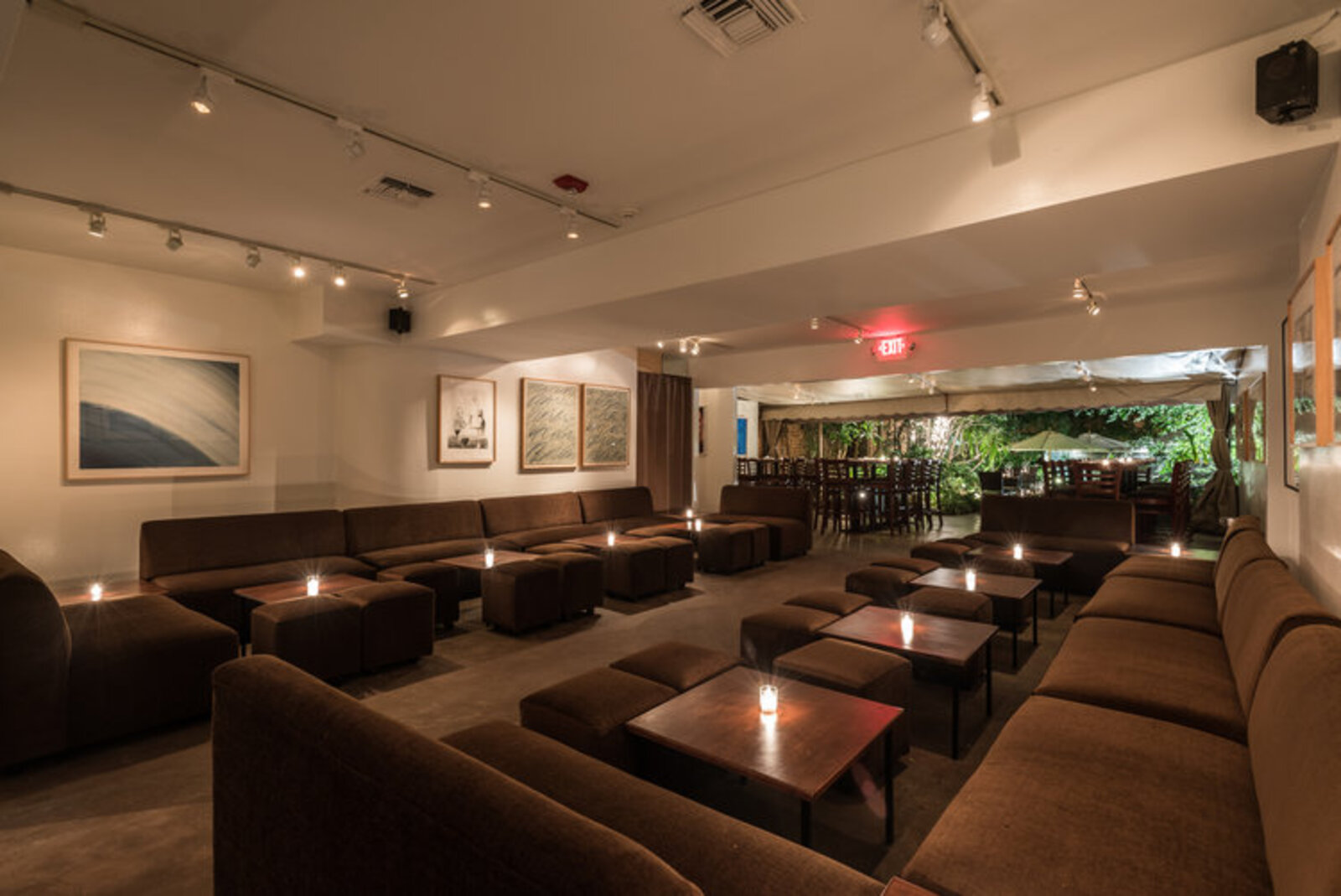
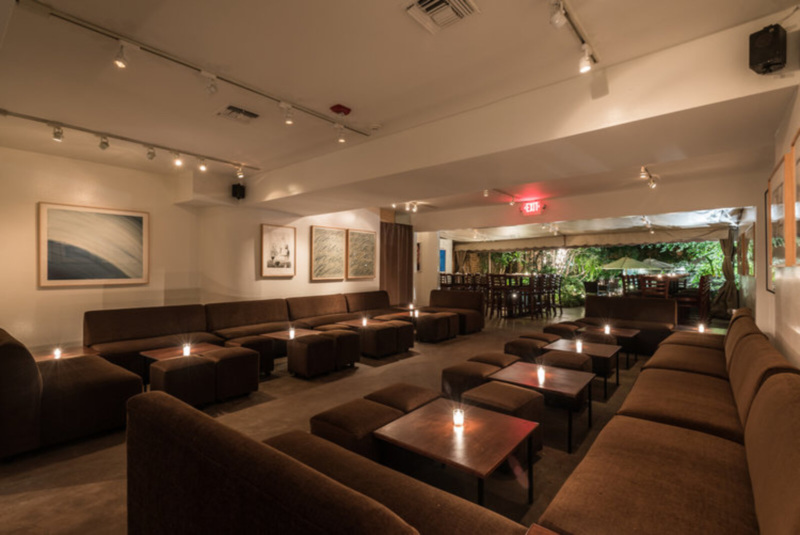
In Los Angeles, “the food and wine and art worlds were extremely small,” Michael explains. Once people started talking about the beautifully composed salads and the compelling wine list (to say nothing of the lush garden digs), connections happened quickly. The McCartys made bold moves, like giving their friend Robert Graham free rein to design a multi-panel installation at the back of the patio.
The glitterati and the art crowd started mingling at Mr. Chow in Beverly Hills in 1974, but as Michael’s began to draw an edgy milieu further west, other chefs and restaurateurs followed. Places like Bruce Marder’s Rebecca’s and Tony Bill and Dudley Moore’s 72 Market Street in Venice offered adventurous diners from different creative practices a place to gather in the open-minded atmosphere of L.A. in the ‘70s and ‘80s. (Less legal substances were consumed in more private corners, too.)
Along with the impressive art collection, Michael’s started building a legacy in the kitchen that remains to this day. Designing market-driven dishes in tune with the nearby Santa Monica farmers market is encoded in the restaurant’s DNA. It’s no wonder Michael’s occupies an essential branch of the contemporary L.A. family chef tree, with Nancy Silverton, Sang Yoon, Brooke Williamson, and Miles Thompson among the notable alumni who carry its influence forward today.
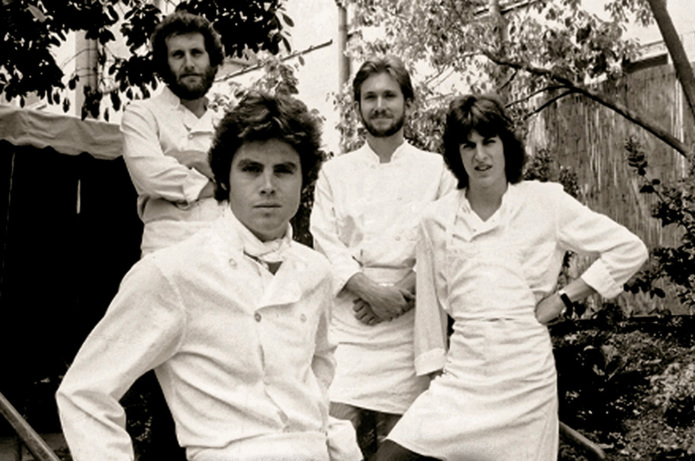
Loyal customers were key figures in expanding the McCarty’s circles, notably Stanley and Elyse Grinstein, collectors and co-founders of the Gemini G.E.L. printshop on Melrose Avenue. A regular parade of art world luminaries came to Los Angeles to work with master printers and would stay with the Grinsteins, whose Brentwood home was one of the city’s more vibrant cultural hubs.
“They would say, ‘How would you like to meet Helen Frankenthaler?’ A couple weeks would go by. ‘This is Roy Lichtenstein. This is Jasper Johns,'” Michael says. Pieces by Frankenthaler, Lichtenstein, and Jim Dine now encircle what was the Grinsteins’ regular table.
In the late 1980s, Kim tapped into her extensive network and launched a quarterly salon series in the upstairs gallery/private dining room. She might ask friends such as Ed Ruscha and Joe Goode to collaborate on a show, or host works from eight of John Baldessari’s former assistants. Big names such as Mark Mothersbaugh have been known to experiment with different mediums, and Kim herself often invites guest curators to program the room. The Art at Michael’s series, more formally than the restaurant itself, has become a place to support artists at all stages of their careers. After a pandemic-induced hiatus, the salon series is set to return soon.
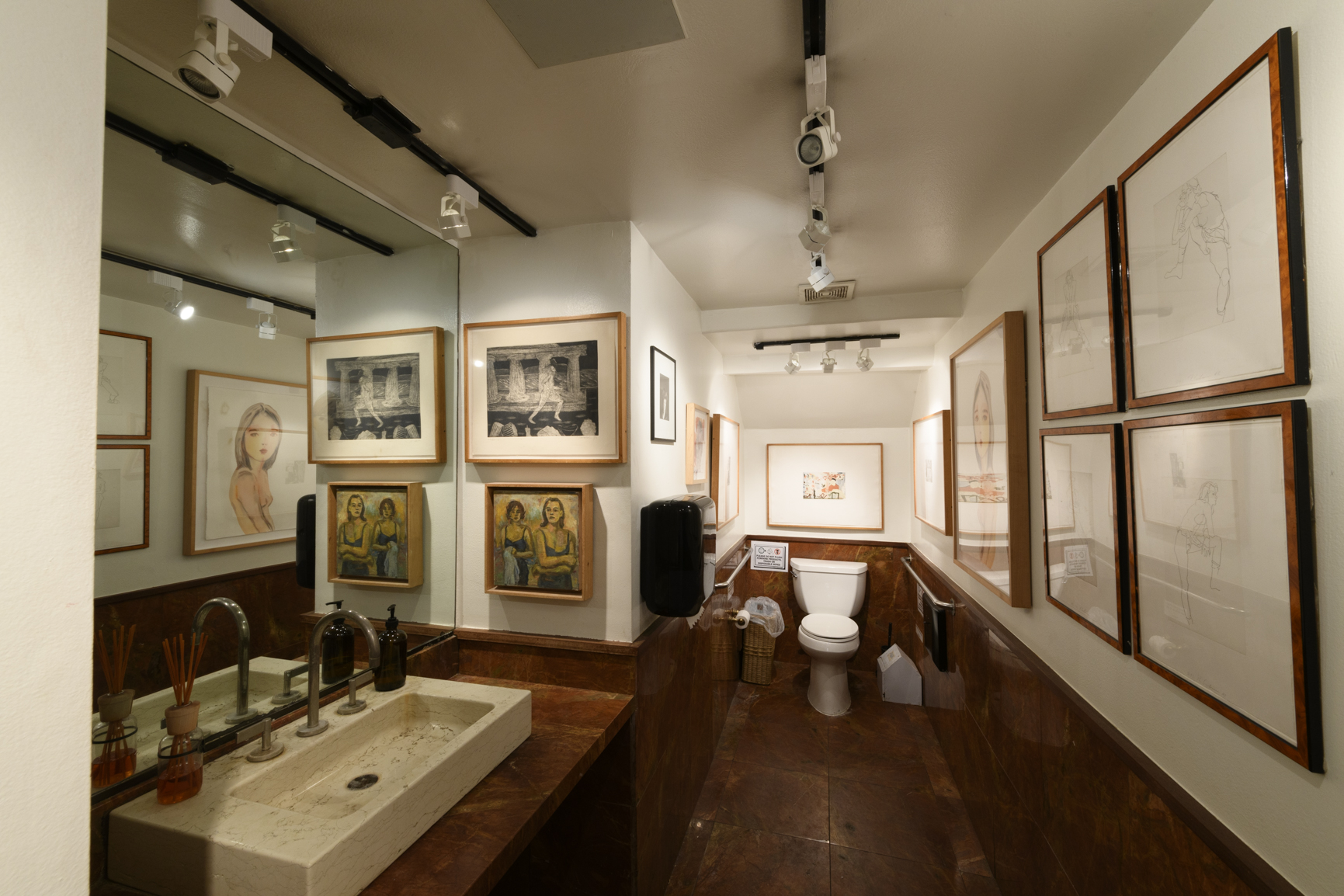
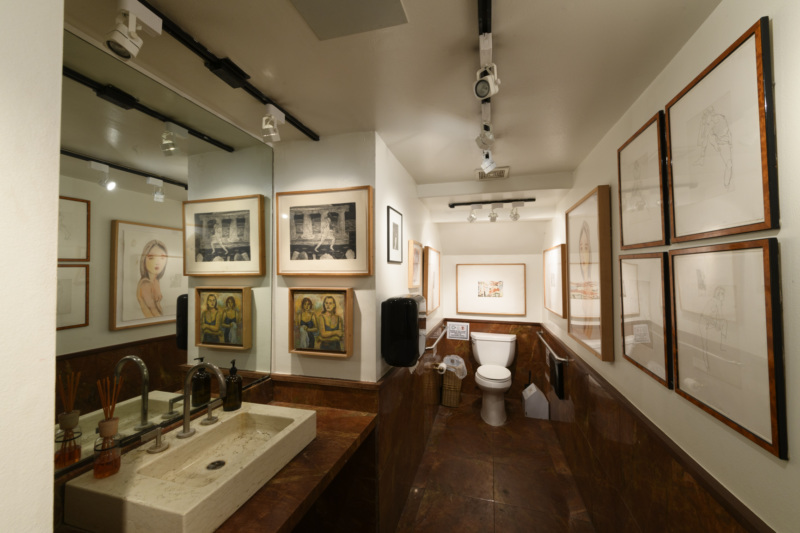
Michael’s infamous bathrooms, chock-full of prized prints and imagery, contain more evidence of lives artfully lived. In Santa Monica, an image by L.A.-based, German-Brazilian photographer Mona Kuhn and one of Kim’s many original paintings provide visual interest in the corridor en route to the downstairs restroom. Once inside, diners can privately enjoy pieces by Hockney, Graham, and Moses.
“For Michael — A Female Presence in the Bathroom” reads Judy Chicago‘s inscription below the nude portrait taken by her husband, Donald Woodman. In this photograph, which hangs over the toilet in the compact upstairs men’s room, the feminist art hero grins widely, holding an apple and a strategically placed garden hose. Even in these spaces there’s not much wall space left. “It just made sense. It’s how I hang my stuff at my house — salon-style, not really perfect,” Kim says. “This is an extension of our home and the way that we live.”
The restaurants, too, are an evolving expression of the McCarty’s engaging spirit. During happy hour in Santa Monica, diners sit alfresco at the recently renovated bar, which is open to the sidewalk. During the pandemic, Kim transformed decommissioned parking meters into flower planters for the newly converted outdoor dining parklet. The menu, too, meets the mood, showcasing a hybrid of France and SoCal cuisine that once was revolutionary and has since become relatively mainstream — but no less compelling.
Jessica Ritz is a freelance writer who has contributed to outlets including Architectural Digest, Metropolis, Los Angeles Times, Los Angeles Magazine, C Magazine, Sunset, Palm Springs Life, Garden & Gun, and American Way. Her reporting passions include architecture, interior design, art, and food. Follow her at jessnritz.com and @jessnritz, and follow Resy, too.










